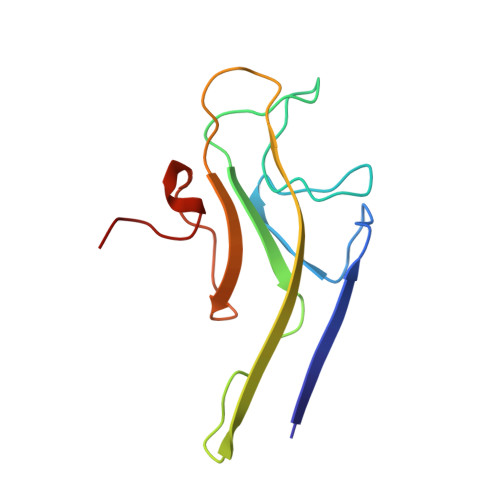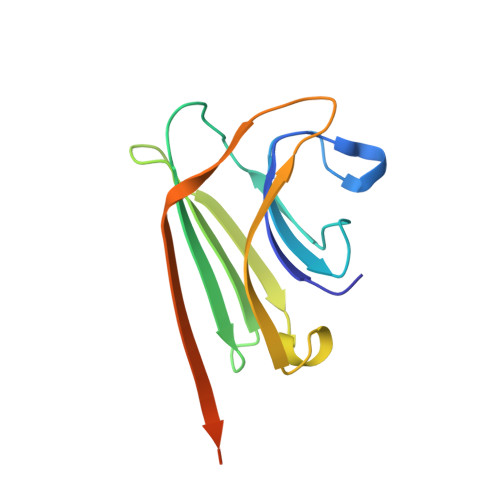The Role of Weak Protein-Protein Interactions in Multivalent Lectin-Carbohydrate Binding: Crystal Structure of Cross-Linked Fril
Hamelryck, T.W., Moore, J.G., Chrispeels, M.J., Loris, R., Wyns, L.(2000) J Mol Biology 299: 875
- PubMed: 10843844
- DOI: https://doi.org/10.1006/jmbi.2000.3785
- Primary Citation of Related Structures:
1QMO - PubMed Abstract:
Binding of multivalent glycoconjugates by lectins often leads to the formation of cross-linked complexes. Type I cross-links, which are one-dimensional, are formed by a divalent lectin and a divalent glycoconjugate. Type II cross-links, which are two or three-dimensional, occur when a lectin or glycoconjugate has a valence greater than two. Type II complexes are a source of additional specificity, since homogeneous type II complexes are formed in the presence of mixtures of lectins and glycoconjugates. This additional specificity is thought to become important when a lectin interacts with clusters of glycoconjugates, e.g. as is present on the cell surface. The cryst1al structure of the Glc/Man binding legume lectin FRIL in complex with a trisaccharide provides a molecular snapshot of how weak protein-protein interactions, which are not observed in solution, can become important when a cross-linked complex is formed. In solution, FRIL is a divalent dimer, but in the crystal FRIL forms a tetramer, which allows for the formation of an intricate type II cross-linked complex with the divalent trisaccharide. The dependence on weak protein-protein interactions can ensure that a specific type II cross-linked complex and its associated specificity can occur only under stringent conditions, which explains why lectins are often found forming higher-order oligomers.
- Laboratorium voor Ultrastructuur, Vlaams Interuniversitair Instituut voor Biotechnologie, Vrije Universiteit Brussel, Paardenstraat 65, Sint-Genesius-Rode, B-1640, Belgium. thamelry@vub.ac.be
Organizational Affiliation:




















